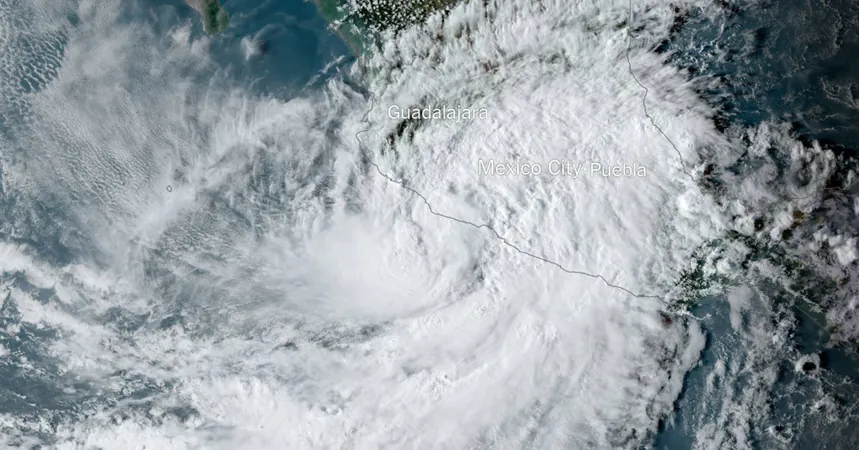
Hurricane John Strikes Mexico's Coast Again: Are We Prepared for the Devastation?
2024-09-27
Hurricane John has once again unleashed its fury on Mexico's Guerrero State, with the U.S. National Hurricane Center reporting renewed threats to the Pacific Coast following earlier devastation earlier in the week. Just days after weakening into a tropical storm, John has regained strength and is now a Category 1 hurricane, threatening to drop an alarming 10 to 20 inches of rain across the region.
Late Thursday, the storm was perched ominously off the coast, where meteorologists warned residents of Guerrero and Michoacán to prepare for catastrophic, life-threatening flash flooding and potential mudslides. Governor Evelyn Salgado of Guerrero took to social media, urging residents to heed official warnings and emphasizing that "Your safety is what's most important." Images from Acapulco showed submerging roadways and military personnel assisting with evacuations.
With an estimated 4,000 homes in jeopardy around Acapulco, the coastal resort city is still recovering from the devastating impact of Hurricane Otis, a Category 5 storm that occurred earlier this year and claimed over 50 lives.
This week's initial landfall of Hurricane John was marked by maximum sustained winds of approximately 120 miles per hour, leading to flash floods and tragic mudslides that took five lives, including a mother and her 10-year-old son, trapped in their home in Tlacoachistlahuaca.
By midday Tuesday, rainfall amounts had surpassed 10 inches in certain areas of Guerrero and Oaxaca—both among Mexico's poorest states—causing widespread power outages and debris-laden roads. Authorities even had to cut electricity to certain districts in Acapulco to prevent electrocutions, leaving thousands without power. The storm also halted air travel and operations at a major cargo port along the coast.
As of Wednesday evening, wind speeds peaked at 70 mph while John threatened to unleash additional torrential rains. Although measuring a hurricane’s severity often relies on the Saffir-Simpson scale—focusing solely on maximum wind speeds—scientists warn that this does not fully encapsulate the overall destruction a storm can cause, including rain and storm surges.
Remarkably, Hurricane John is the 10th named storm in the Eastern Pacific for this year, occurring alongside Hurricane Helene, a significant storm making its way toward Florida after its formation from the same parent system: the Central American Gyre, which is responsible for both storms.
Compounding concerns, research indicates that such rapid intensification events are now twice as likely for Atlantic hurricanes, a trend attributed in part to human-caused climate change. As these storms threaten lives and infrastructure, the urgent need for improved disaster preparedness and response measures in affected regions has never been clearer. Will communities bounce back yet again, or will this be the turning point in how we confront these vicious storms? Stay tuned.


 Brasil (PT)
Brasil (PT)
 Canada (EN)
Canada (EN)
 Chile (ES)
Chile (ES)
 España (ES)
España (ES)
 France (FR)
France (FR)
 Hong Kong (EN)
Hong Kong (EN)
 Italia (IT)
Italia (IT)
 日本 (JA)
日本 (JA)
 Magyarország (HU)
Magyarország (HU)
 Norge (NO)
Norge (NO)
 Polska (PL)
Polska (PL)
 Schweiz (DE)
Schweiz (DE)
 Singapore (EN)
Singapore (EN)
 Sverige (SV)
Sverige (SV)
 Suomi (FI)
Suomi (FI)
 Türkiye (TR)
Türkiye (TR)